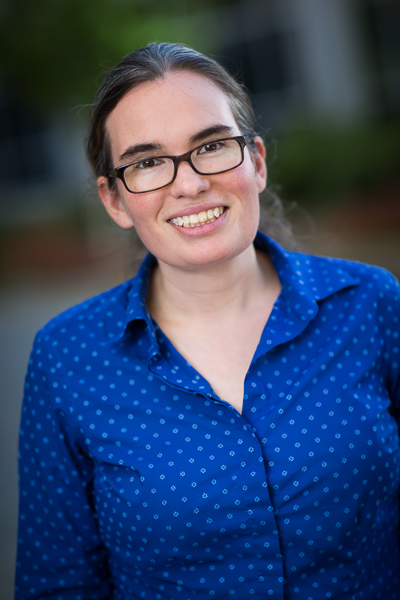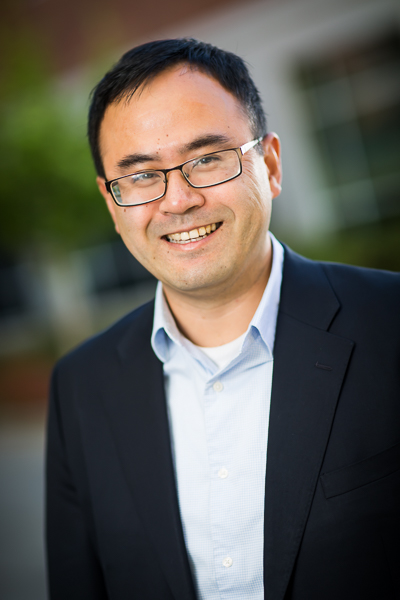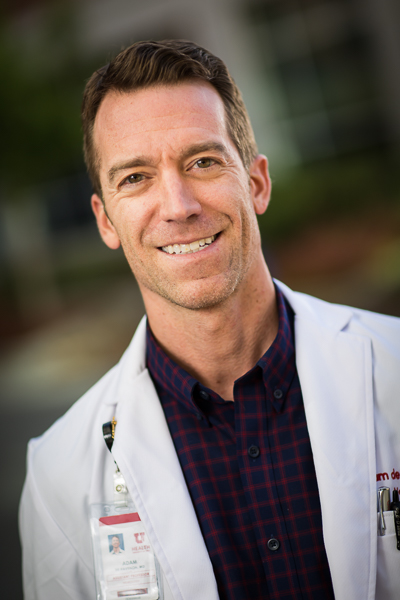
A mother's failing health, a love for computers and a desire to help patients, the sheer joy of following curiosity. Inspiration comes from unexpected places, a theme echoed throughout Vitae, a hallmark event recognizing research excellence across University of Utah Health presented by the Office of the Senior Vice President for Health Sciences Research Unit in collaboration with the Office of Academic Affairs and Faculty Development. This year’s symposium spotlighted six rising-star faculty who captivated the crowd with stories of their science, and how they got to where they are today.
Jia-Wen Guo, PhD, RN, Assistant Professor, Biomedical Informatics
“Have You Seen a Patient Like Me?” – Leveraging Patient Records to Support Personalized Cancer Pain Care.

While working as a cancer nurse, I observed that pain is both the most common complaint and most fearful symptom of cancer patients. Pain management is challenging because analgesics are not always effective. Cancer pain is complex because it is multidimensional and individualized and can be caused by the tumor itself or cancer treatment. My research seeks to discover knowledge supporting a personalized pain care approach by using existing longitudinal patient data in the electronic health records (EHRs). Unfortunately, HER data are not readily available for research, and it is unclear what data can be useful for studying cancer pain management. A recent NIH K01 Award allows me to begin (1) investigating the availability and quality of EHR data for studying personalized cancer pain care and (2) identifying patient groups with similar pain trajectories. This work will help reveal factors contributing to optimal cancer pain management for individual patients and support developing personalized cancer pain care.
Jessica C.S. Brown, PhD, Assistant Professor, Microbiology and Immunology
Exploiting Drug Interactions to Treat Fungal Infections

Systemic fungal infections attack vulnerable patients—those with underlying diseases, particularly immune problems—and cause mortality rates of up to 90%. Such infections are difficult to treat due to few classes and limited availability of existing drugs. In order to improve treatment of these devastating infections, my lab is designing new treatments to expand the efficacy of existing drugs by exploiting synergistic interactions between these drugs and those for treating other diseases. Synergistic drug interactions occur when two drugs amplify each other’s activities when used in combination. These combinations can be very powerful, even killing microbes resistant to one of the drugs in the pair but are rare and difficult to identify. Our novel methods allow us to rapidly screen drugs to identify those that act synergistically with critical antifungal drugs. By focusing on synergistic partners that are already FDA-approved, our new drug combinations can move into the clinic without extensive and expensive clinical trials. In addition, we are applying our drug interaction detection technology to other systemic infections, including drug-resistant bacterial infections.
Katsu Funai, PhD, Associate Professor for Physical Therapy & Athletic Training
Use It or Lose It: Energy Efficiency of Mitochondria

Inactivity represents a potent health risk for all-cause mortality including cardiometabolic diseases. At the age of 44, my mother became mobility-impaired due to a complex foot injury. The next 20 years of her remaining life were dominated by a myriad of illnesses across many organ systems with accelerating frequency. I am motivated by an internal conviction that disuse was the underlying cause for these health problems. As the energy hub of cells, mitochondria play an important role in converting nutrients to produce ATP, the energy currency of all living things. As with all chemical reactions, this energy transfer process is not perfectly efficient. As byproducts of such inefficiency, chemically unstable molecules known as mitochondrial radicals are produced. The premise of our laboratory is to understand the molecular underpinnings of how inactivity promotes inefficiency of mitochondrial energy transduction and induces cellular dysfunction and damage.
Jaclyn Winter, PhD, Assistant Professor of Medicinal Chemistry
Decoding Microorganism Communication for Antibiotic Discovery

It has been almost a decade since the last antimicrobial agent possessing a new mode of action was approved by the FDA. Yet while antibiotic discovery has been declining, antibiotic-resistance is on the rise. Infections that were once routinely treated are now resistant to our arsenal of clinically approved antibiotics, many of which were discovered from natural sources decades ago. In nature, microorganisms exist in complex communities, competing for nutrients and space. To survive, microorganisms have developed defense mechanisms that are tightly regulated until provoked. Drawing on these interactions, my research focuses on understanding the chemical and molecular mechanisms used by microorganisms communicating in symbiotic and antagonistic relationships. Ultimately, the intra- and inter-species forms of communication will be used to trigger the activation of specialized compounds that could potentially serve as new antibiotic agents.
Adam de Havenon, MD, Assistant Professor, Neurology
Treatment Targets to Prevent Stroke from Intracranial Atherosclerosis

Early in neurology residency, I became interested in stroke and brain imaging with MRI. But during vascular neurology fellowship, I realized my core interest would be developing and testing advanced neuroimaging to improve stroke diagnosis, treatment, and prevention. Similar to many of the vascular neurologists and neuroradiologists I consider role models, my passion for clinical research stems from intellectual curiosity and a commitment to discovering superior diagnostic and treatment options for my patients. Intracranial atherosclerosis is the most common cause of stroke in the world, yet it is understudied in the United States because it disproportionately affects racial and ethnic minorities. The average annual rate of recurrence for all causes of stroke is 5%. For intracranial atherosclerosis patients, the rate of recurrence is at least 12% per year and up to 20% per year. For these reasons, I am proud to help lead the search to find innovative methods of preventing stroke due to intracranial atherosclerosis.
Benjamin Myers, PhD, Assistant Professor, Oncological Sciences
Lessons from One-eyed Sheep: How Studying Developmental Biology Can Help us Treat Cancer

All human beings begin life as a single cell. During gestation, this cell undergoes a carefully choreographed series of divisions and transformations that ultimately give rise to all of our tissues and organs. To allow this remarkably beautiful process to unfold correctly, cells in embryos use chemical signals to communicate with one another. Even tiny errors in the timing or location of these signals can lead to birth defects or cancer. Despite decades of study, the molecular principles underlying cell-to-cell communication pathways remain obscure. This has hindered efforts to control these processes for therapeutic ends. My laboratory uses biochemistry, biophysics, and cellular imaging to learn how cells communicate with each other during normal development and how this process goes awry in diseases such as cancer. Our recent insights into a fundamental but mysterious cell-to-cell communication circuit known as the “Hedgehog pathway” has inspired a new therapeutic strategy to treat some of the most common cancers on the planet.